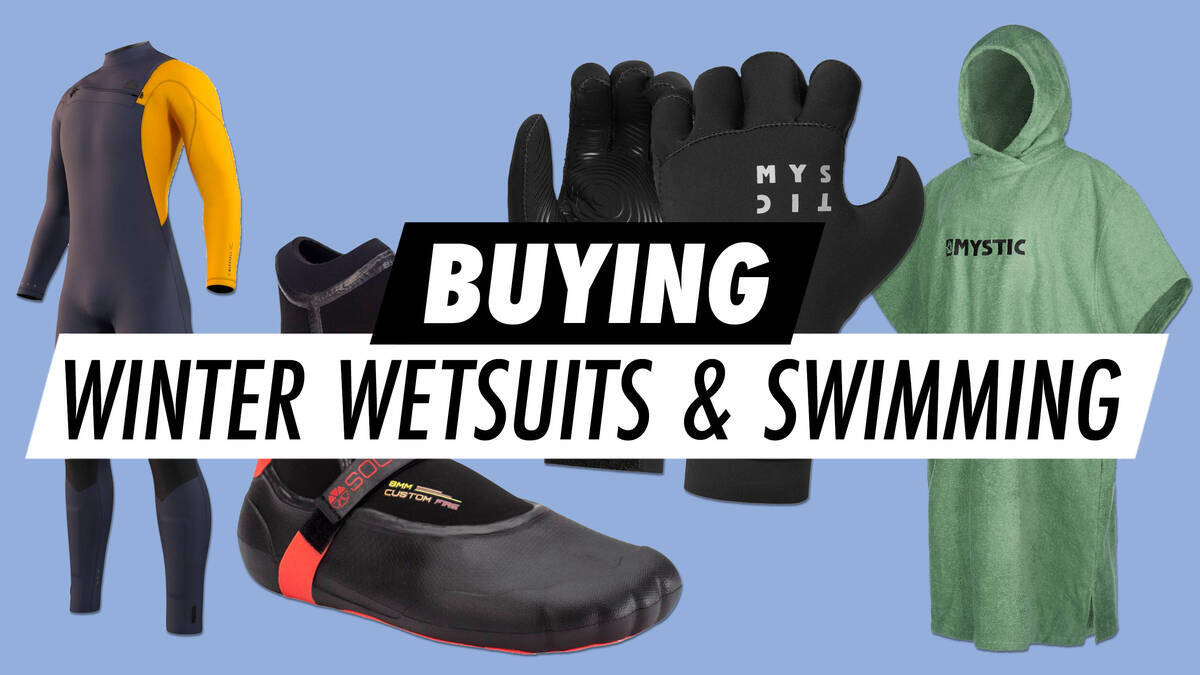Guide to Winter Wetsuits and Cold Water Swimming

If you’re into winter surfing or swimming in chilly water, you're likely here to explore off-season beach adventures when the temperatures drop. Winter presents the ideal time for surfing due to the less crowded surf spots. Meanwhile, the thrill of immersing yourself in cold water can deliver a fantastic adrenaline rush. This guide is aimed at those wishing to savour winter by embracing colder waters.
We host an extensive array of surfing winter wetsuits alongside other impressive neoprene gear. You can head directly to our entire line-up of Wetsuits & Neoprene Accessories, or gain some inspiration from this guide.
Let’s begin with our guide to winter wetsuits, although you're welcome to jump straight to the winter swimming section.
Buyer's Guide for Winter Wetsuits – Choosing the Optimal Winter Surfing Wetsuit
A thick winter wetsuit becomes indispensable when temperatures dip and the water feels frigid. Winter wetsuits offer sufficient insulation to keep you comfy during your treasured water activities. With a suitable winter surfing wetsuit and favourable waves, why miss a chance to indulge in your favourite activity?
Selecting the top winter wetsuit is vital to staying both comfortable and safe in cold water, and we’re here to aid you! Whether venturing into winter surfing, kitesurfing, paddleboarding, or wakeboarding, our straightforward advice will help extend your surfing season.
Keep reading for detailed guidance, or view our curated selection of winter wetsuits straight away.
THICKNESS AND DESIGN OF WINTER WETSUITS
There are several critical factors when deciding on a wetsuit for winter. Unsurprisingly, the thickness of the neoprene material is essential: Greater thickness equates to superior insulation.
Typically represented by two numbers, wetsuit thickness is described as such: the first details the torso's neoprene thickness, while the second states the arms and legs thickness. The appropriate thickness for a winter wetsuit is contingent upon temperature. Here’s a handy reference for neoprene thickness against water temperature:
| Water temperature °C | Water Temperature °F | Neoprene Thickness |
| 19°C - 25 °C | 66°F - 77 °F | 1-2 mm |
| 14°C - 18 °C | 57°F - 64 °F | 3 mm |
| 10°C - 14 °C | 50°F - 57 °F | 4 mm |
| 5°C - 10 °C | 41°F - 50 °F | 5 mm |
| < 5 °C | < 77 °F | 6 mm |
Consider several additional pointers when selecting winter wetsuits. Evaluating various winter-specific wetsuit models, keep these in mind:
- Material: Manufacturers often utilize specialized technologies to boost wetsuit warmth, such as adding a foam core to neoprene. After pinpointing the right thickness, review product specifications for possible insulation enhancements, further enriching your winter surfing experiences.
- Stitching: Typically, neoprene materials are stitched using flatlock, glued stitches, or Glued Blind Stitches (GBS). Known for superior waterproofing and flexibility, GBS is particularly effective for winter wetsuit designs.
- Sealing: Some winter models boast taped or sealed seams to heighten water resistance and durability.
- Zipper: For minimal water ingress and increased flexibility, chest zips are beneficial for winter wetsuits. Back zips facilitate easier entry and exit, though may allow more water ingress than other zipper types.
- Wetsuit Hood: Essential in cold conditions, a wetsuit hood reduces cold water flowing down your back. If you'd prefer to remove it, consider getting a separate neoprene hood instead of a hooded wetsuit.
- Neoprene Gloves: Wetsuit gloves protect hands against the cold and aid in equipment handling. Choose a snug-fitting pair with appropriate thickness. Consider that 5-finger gloves offer more dexterity but less warmth than mittens, while lobster-style gloves offer a balanced solution.
- Surf Boots: Essential for winter paddleboarding or surfing, neoprene footwear keeps feet from freezing with their grippy soles and warmth.
- Thermal Rash Vest: Offering transitional layering, a thermal vest worn under your summer wetsuit provides added insulation akin to a 4/3 mm wetsuit within 10-14 °C conditions.
For deeper understanding on selecting the correct wetsuit, consult our detailed Wetsuit Buying Guide.
Enjoying Cold Water Swimming
Cold water swimming, common as winter swimming or ice swimming, is another wonderful way to relish the seaside in winter. Dive into the chilly water and wash away stress! Known for various mental and physical health benefits, the activity is also cost-effective since it requires minimal gear. A basic towel suffices when you eliminate the extras!
Equipment for cold water swimming emphasizes safety and comfort. Enhance your experience with these accessories:
- Neoprene Boots: Opt for soles providing strong surface grip and safeguarding from rocks. These boots boost comfort and lessen injury risks, perfect for winter swimmers.
- Towel Ponchos: Year-round versatile, changing ponchos shield against wind and absorb skin moisture, reducing chill after leaving the water.
- Neoprene Gloves: Offering protection from the cold, wetsuit gloves help securely hold onto water entry and exit points.
- Thermal Swim Caps: To reduce heat loss or ensure ear protection, a neoprene hood is highly effective.
- Dry Bags: A versatile year-round item, dry bags secure wet towels and swimwear, preventing water exposure to car or bus seats.
- Other accessories: Consider a waterproof seat cover if planning to drive immediately post-dip. Additionally, surf-accessory options such as mugs complement the winter beach outing for enjoying a hot beverage.
Benefits of Swimming in Cold Waters
The increasing popularity of cold water swimming is linked to numerous potential health perks, like bolstered immunity and improved circulation. Better mental well-being is another added advantage.
However, consider the risks before winter swimming. Those with heart or breathing issues should consult a medical professional before taking the plunge. Beginners should join a group to learn best practices.
Heed our advice for preparation, and you're well on your way!
